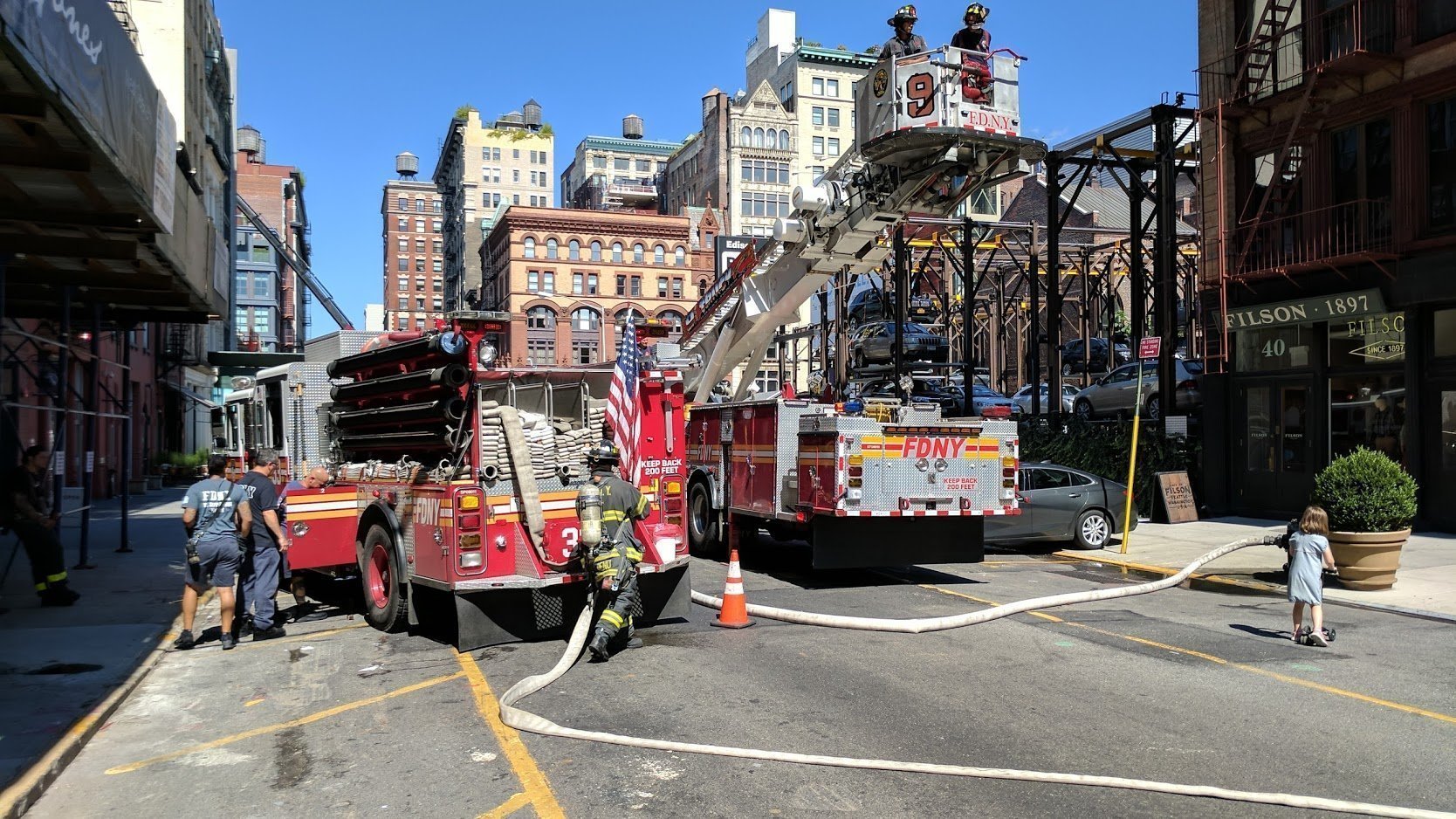LED walls in airports or shopping malls have to meet strict security guidelines and fire protection regulations. And if they do burn, the damage to the expensive digital walls is enormous. An automatic fire protection system integrated into the devices is designed to change this.
For advertising, entertainment, or general information: Large LED installations are very popular. Even though the approval procedures can be complex, and the cost and the effort for such projects can increase enormously – because it is all about safety and fire protection in public areas with a large number of people. Large LED walls can cost several hundred thousand euros in such cases. Regardless of whether they are installed in airports, shopping malls, subway stations or at trade fairs.
In case the system actually does start a fire, the damage caused by extinguishing systems such as sprinklers is massive – even if only a single panel or defective component is actually at the root of the problem. German system integrator Ben Hur wanted to solve exactly this problem. For this reason, they have been working on LED screens and fire protection for many years on behalf of several airports. The Cologne-based company first tested various displays and LED surfaces for their fire properties in cooperation with the Material Testing Institute in Braunschweig.
The solution is a mini extinguisher
The result was sobering: Many of the standard plastics used for display production in China are highly flammable according to European standards. And thus, not approvable for installations in public spaces. Only few suppliers like NEC offer displays in all standard sizes with metal housings. While these are safer, they are also not suitable for all locations. Ben Hur did a lot of experiments and also relied on the expertise of their partner, the distributor Lang from Lindlar. Finally, they found the mini fire extinguishers from the Ahrensburg-based company and safety expert JOB. More precisely the „Automatic Miniature Fire Extinguisher“, AMFE for short, and the „E-Bulb“ (VDS-certificated) micro fire extinguishers. Ben Hur asked whether a version for media installations could also be designed. In response, the German trio of Ben Hur, Lang and JOB teamed up to develop an automatic system. This system can automatically extinguish a developing fire in the screen itself, which cannot be reached from outside with sprinklers or other conventional extinguishing systems.
For this purpose, AMFEs are integrated directly into the individual panels of the LED walls and e-bulbs directly onto the boards. The AMFE mini fire extinguisher consists of an extinguishing head and a cylinder. At a defined temperature or an activation trigger, a glass ampoule in the cylinder head breaks and releases the extinguishing agent: a non-toxic non-conductive liquid gas. Within milliseconds, this gas fills the space inside the burning panel and extinguishes the fire. The even smaller E-Bulbs work on the same principle. In addition, the power supply to the wall is immediately interrupted at all poles. Both extinguishing systems can also be triggered by smoke sensors. In contrast to other systems with CO2, the extinguishing fluid used is residue-free and does not affect other electronic components. The affected panel can then be replaced, the remaining wall remains intact.
From fire sources to fire agents
For all this to work, the displays and LED panels used must be substantially mechanically optimized. Screens with the automatic extinguishing technology change from fire sources (“Brandverursacher”) to fire agents (“Brandbeteiligten”) – a big difference in terms of approval. And that opens up new installation possibilities. In exhibition buildings, airports and on escape routes, only building materials of fire class A1 (non-combustible) and B1 (flame-retardant) are permitted. Since LED walls and large displays cover large areas of the walls, they must also meet these requirements. Digital walls can also be installed in high-rise buildings and elevators, whose fire protection regulations are among the strictest, using the new components. As “ non fire-causing“ they are also harmless in an environment rated A1 or B1.
The joint development „Made in Germany“ is used, for example, in Samsung’s LED walls, which are now installed at several major German airports and trade fair locations. The largest installation to date was implemented at Frankfurt Airport. The 43 square meter LED wall consists of 25 horizontal and 5 vertical units, so-called cabinets.
With this unique solution, Ben Hur is technologically one to two years ahead of its competitors. Before the Corona crisis, the demand was enormous, especially for large format installations. And the company is still able to finish enough projects. The integrator is confident that with the economic recovery and the reopening of airports and exhibition centers, demand will also pick up again. After all, the technology developed by Ben, Job and Lang will enable completely new digital eye-catchers.
Get full access to all invidis yearbook articles – it’s free!
Download the industry bible for more analysis and market data. Secure your personal copy now – it’s free of charge.

